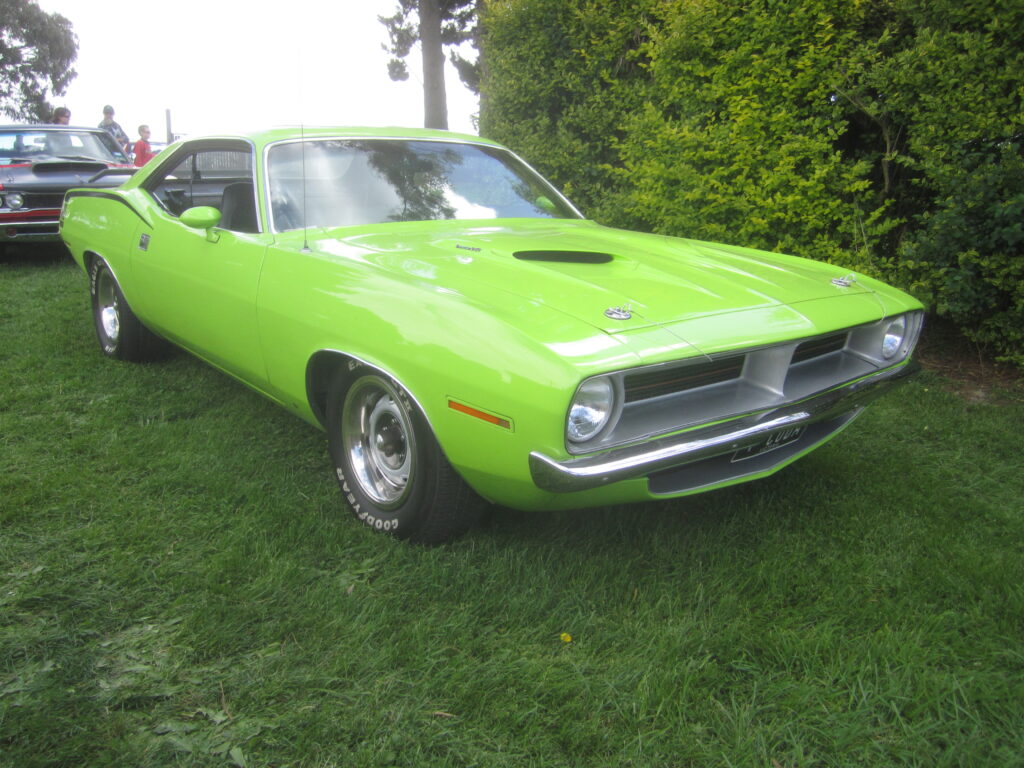
In the complex and ever-evolving world of automotive engineering, breakthroughs in safety and performance often stand alongside sobering reminders of how easily things can go wrong. The recent, massive recall by Ford of over a million vehicles due to a rearview camera software glitch serves as a stark contemporary example. This isn’t merely a minor inconvenience; it’s a critical safety issue that, once again, shines a spotlight on the ongoing quality control challenges faced by American automakers as they push increasingly complex technology into vehicles.
This incident, affecting popular models across Ford and Lincoln lineups from 2021 to 2025, underscores a deeper, systemic vulnerability. The potential for a legally mandated safety feature—the rearview camera—to freeze, delay, or simply not display an image when drivers need it most, increases the risk of a crash. Such flaws, while seemingly isolated, echo a long history of engineering decisions, both American and global, that have placed drivers and passengers at significant risk, sometimes with devastating consequences.
From the catastrophic failure of airbags to dangerously designed fuel tanks and inexplicable software oversights, the automotive landscape is littered with examples of engineering missteps. This article delves into some of the most prominent and instructive cases, beginning with Ford’s latest ordeal, to provide a comprehensive look at how design flaws, regulatory delays, and outright corporate negligence have shaped—and sometimes marred—the pursuit of safer, more reliable vehicles. Join us as we dissect these crucial moments in automotive history, offering a critical yet objective assessment of the vehicles and the underlying issues.

1. **Ford’s Latest Rearview Camera Recall: A Modern Flaw in Focus**Ford’s recent recall of over 1 million vehicles, spanning model years 2021-2025, represents a significant and concerning technical failure. The core issue lies within a software error affecting the rearview cameras, a crucial safety feature mandated by federal regulations. This defect can manifest in several dangerous ways: the backup camera image may freeze, experience delays, or fail to display entirely when the vehicle is in reverse, thereby significantly reducing the driver’s view and heightening the risk of a collision.
The widespread nature of this problem is particularly troubling, as it encompasses popular Ford and Lincoln models such as the Bronco, F-150, Edge, Escape, Corsair, and Navigator, among many others. The faulty software, residing within the Ford Sync infotainment system, can cause the center screen to go blank or freeze without warning. This leaves drivers without a functional backup camera at critical moments, directly contravening the purpose of such a vital safety device.
As Ford officially stated in its recall notice to the National Highway Traffic Safety Administration (NHTSA) on Tuesday, “A software error may cause the rearview camera image to delay, freeze or not display when the car is in reverse, reducing the driver’s view behind the vehicle and increasing risk of a crash.” This incident is not an isolated occurrence for Ford; it marks the second major camera-related recall for the company within the same year. This pattern raises serious questions about the effectiveness of Ford’s quality control processes and its ability to promptly address safety concerns, especially given a previous $165 million penalty for a delayed recall of a similar nature.
Adding to the concern, questions have been raised regarding Ford’s response timeline. The NHTSA reportedly received nearly 40 complaints about the camera system as early as January, including reports of persistent failures. Despite these early warnings, Ford engineers did not reproduce the defect until April, when they finally linked the problem to a software glitch. This delay in identifying and addressing a federally mandated safety feature highlights potential systemic issues in how Ford manages known problems, leaving owners in limbo until a fix, expected in the third quarter of this year, becomes available.

2. **The Takata Airbag Scandal: A Deadly Concealment**The Takata airbag scandal stands as one of the most tragic and expansive recalls in automotive history, exposing a deadly defect that transformed a life-saving device into a serious threat. Airbags, universally lauded as a cornerstone of modern automotive safety, were originally designed to cushion passengers during collisions. However, certain airbags manufactured by the Japanese company Takata were found to contain a critical flaw that could result in catastrophic failure.
Beginning in 2013, it was revealed that Takata airbags could explode upon deployment, propelling sharp metal fragments into the vehicle’s cabin. This horrific malfunction caused severe injuries and, tragically, led to numerous fatalities. The core of the problem lay in the inflator mechanism, which could degrade over time due to exposure to humidity and temperature fluctuations, making the deployment process dangerously volatile.
Further investigations uncovered a disturbing truth: both Takata and Honda, a major client, were aware of the airbag defect but failed to report it to authorities. Reports indicated that the defect was linked to at least six deaths before the truth emerged. This concealment led to significant penalties, with Honda being fined $70 million and Takata facing daily penalties for its lack of cooperation.
The scale of the recall was unprecedented, ultimately affecting an estimated 65 to 70 million vehicles worldwide by 2019. Despite these massive efforts, millions of vehicles with faulty Takata airbags remained on the road, continuing to pose a risk to drivers and passengers. The scandal inflicted immense damage on Takata’s reputation, ultimately leading to its bankruptcy, and served as a stark, enduring lesson on the critical importance of transparency and swift action when dealing with vehicle safety defects.

3. **Suzuki Celerio’s Brake Failure: A Safety System Gone Wrong**In 2015, Suzuki faced a critical safety challenge with its Celerio hatchback when a significant brake defect came to light. This issue was dramatically uncovered during a routine brake test in the United Kingdom, where an automotive journalist experienced the brake pedal going straight to the floor when attempting to stop the car from 80 mph. This alarming incident pointed to a dangerous flaw that had the potential for severe consequences.
The root cause of the brake failure was paradoxically linked to a safety device installed by Suzuki. This system was designed to retract the brake pedal in the event of a crash, a measure intended to prevent leg injuries to the driver. While the intention was noble, the execution proved disastrous. Under conditions of hard braking, the brake pedal mechanism could actually break, rendering the braking system entirely inoperable and making it impossible for the driver to slow or stop the vehicle.
Such retraction systems are common in many countries, mandated by regulations aimed at minimizing injuries during accidents, particularly to the driver’s feet and legs when the car’s firewall might deform under impact. Suzuki’s specific design, however, introduced a fatal vulnerability. The defect was pinpointed to a small metal component responsible for securing the brake pedal in place. Under the stress of heavy braking, this piece could snap, leaving the driver without any means of deceleration.
Suzuki responded by issuing a swift recall, acknowledging the gravity of the situation. The solution was relatively straightforward: replace the faulty metal piece with a stronger link to ensure the brake pedal remained securely in position. While the defect was resolved, the incident highlighted the crucial need for exhaustive safety testing, even for features intended to enhance protection. It underscored how a well-intentioned safety innovation, if improperly engineered, can inadvertently introduce a greater peril to vehicle occupants.
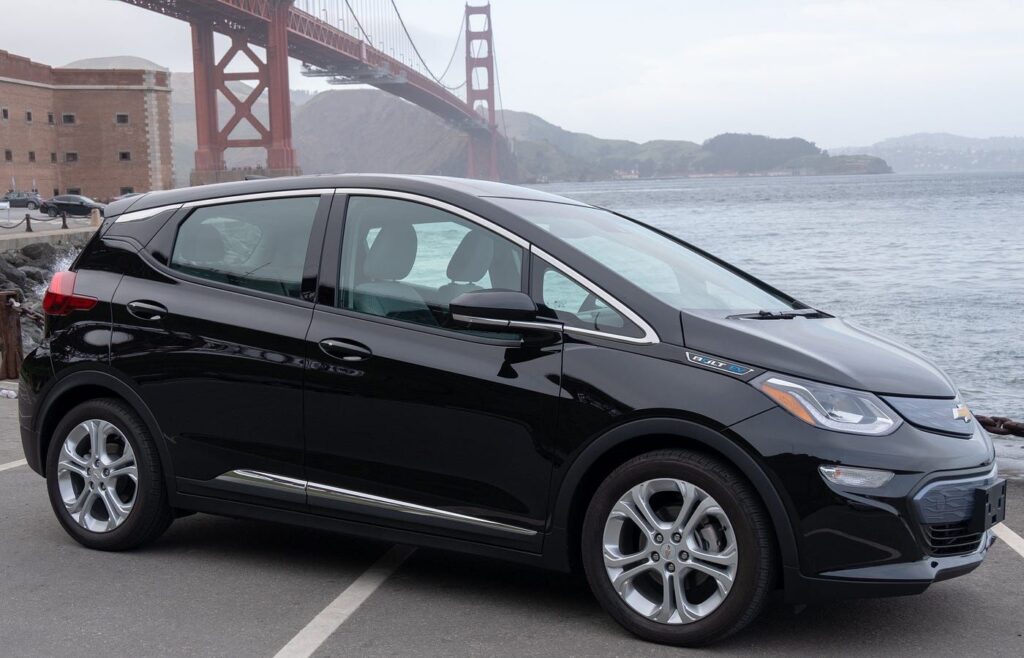
4. **General Motors’ Engine Mount Failure: A Costly Refusal to Recall**In the late 1960s, General Motors encountered a severe engineering problem involving the failure of its engine mounts, a component critical for securing the engine to the vehicle chassis. This was far from a minor issue; a broken engine mount could trigger a perilous chain reaction, making the vehicle nearly impossible to control and stop, placing drivers in immediate danger.
The design flaw became apparent because cars of that era typically used a cable system to link the gas pedal to the engine. When an engine mount failed, the engine would violently shift, inadvertently pulling on the accelerator cable. This action would cause the throttle to become stuck open, meaning the car would continue to accelerate even if the driver removed their foot from the pedal, leading to uncontrolled forward motion.
Compounding this already dire situation, the engine’s erratic movement also had a detrimental effect on the braking system. The sudden upward lurch of the engine could dislodge the brake booster, making it significantly harder to engage the brakes. This required substantially more force from the driver to achieve any deceleration. With an accelerating vehicle and compromised braking, drivers found themselves in an extremely precarious and terrifying predicament.
Despite the clear and present danger posed by this defect, General Motors initially resisted issuing a recall. Edward Cole, who was then GM’s president, controversially downplayed the problem, likening its severity to that of a common flat tire. However, the United States government recognized the gravity of the situation and intervened, compelling GM to take corrective action. The eventual recall encompassed a massive seven million vehicles, costing the company millions of dollars in repairs and inflicting considerable damage to its corporate reputation. This recall serves as a historical precedent for the dangers of corporate inertia when faced with critical safety concerns.

5. **Ferrari’s Brake Fluid Leak: Precision Engineering’s Vulnerability**Even the pinnacle of automotive luxury and performance, represented by brands like Ferrari, is not immune to critical defects that can jeopardize driver safety. A notable instance of this was Ferrari’s brake fluid issue, which triggered a major recall affecting 23,555 vehicles manufactured between 2005 and 2022. This broad range included highly exclusive and high-performance models such as the LaFerrari and the F60, underscoring that no vehicle, regardless of its prestige or price tag, is impervious to manufacturing flaws.
The core of the problem was traced to a faulty brake fluid reservoir cap. This cap was designed in such a way that it did not vent properly, leading to the gradual formation of a vacuum inside the reservoir. Over an extended period, this vacuum significantly increased the likelihood of a brake fluid leak. Should a sufficient amount of fluid escape, the vehicle’s brakes could partially or entirely fail, making it incredibly difficult, if not impossible, to bring the high-speed sports car to a stop.
Brake failure is inherently dangerous in any vehicle, but in high-performance machines like Ferraris, which are built to operate at extreme speeds, such a defect is particularly alarming. Any compromise to the braking system in these vehicles can lead to catastrophic accidents. Fortunately, Ferrari identified this critical flaw and proactively issued a recall, acting before widespread incidents could occur, thereby potentially averting serious injuries or fatalities.
The resolution to this serious issue was relatively straightforward: Ferrari replaced the defective cap with a new design that allowed for proper venting, effectively preventing the formation of a vacuum. Additionally, a crucial software update was implemented to alert drivers when brake fluid levels dropped too low. This warning system provides drivers with a vital heads-up, allowing them sufficient time to address the fluid level before experiencing a sudden and dangerous brake failure. This recall underscores that even in an industry synonymous with meticulous engineering, simple components can have profound safety implications.
Car Model Information: 2014 Ferrari LaFerrari 2dr Cpe
Name: LaFerrari
Manufacturer: Ferrari
ModelCode: F150
Production: 2013–2018
ModelYears: 2013–2016 (coupé),2016–2018 (Aperta)
Assembly: Maranello
Designer: Flavio Manzoni
Class: Sports car
BodyStyle: coupé
Layout: Rear mid-engine, rear-wheel-drive layout
Related: Ferrari FXX-K,Ferrari Daytona SP3
Engine: Ferrari F140 engine,V12 engine
Motor: Kinetic energy recovery system
Transmission: Dual-clutch transmission
Powerout: Convert
Wheelbase: 2650 mm
Abbr: on
Length: 4702 mm
Width: 1992 mm
Height: 1116 mm
Weight: 3495 lb
Order: flip
Predecessor: Ferrari Enzo
Successor: Ferrari F80
Sp: uk
Doors: Butterfly doors
Categories: All Wikipedia articles written in British English, Articles with short description, CS1 Italian-language sources (it), Cars discontinued in 2018, Cars introduced in 2013
Summary: The LaFerrari (project name F150) is a limited production mid-engine, mild hybrid sports car built by Italian automotive manufacturer Ferrari. Its name means “The Ferrari” in Italian, as it is intended to be the definitive Ferrari.
Get more information about: LaFerrari
Buying a high-performing used car >>>
Brand: Ferrari Model: LaFerrari
Price: Not Priced Mileage: 336 mi.
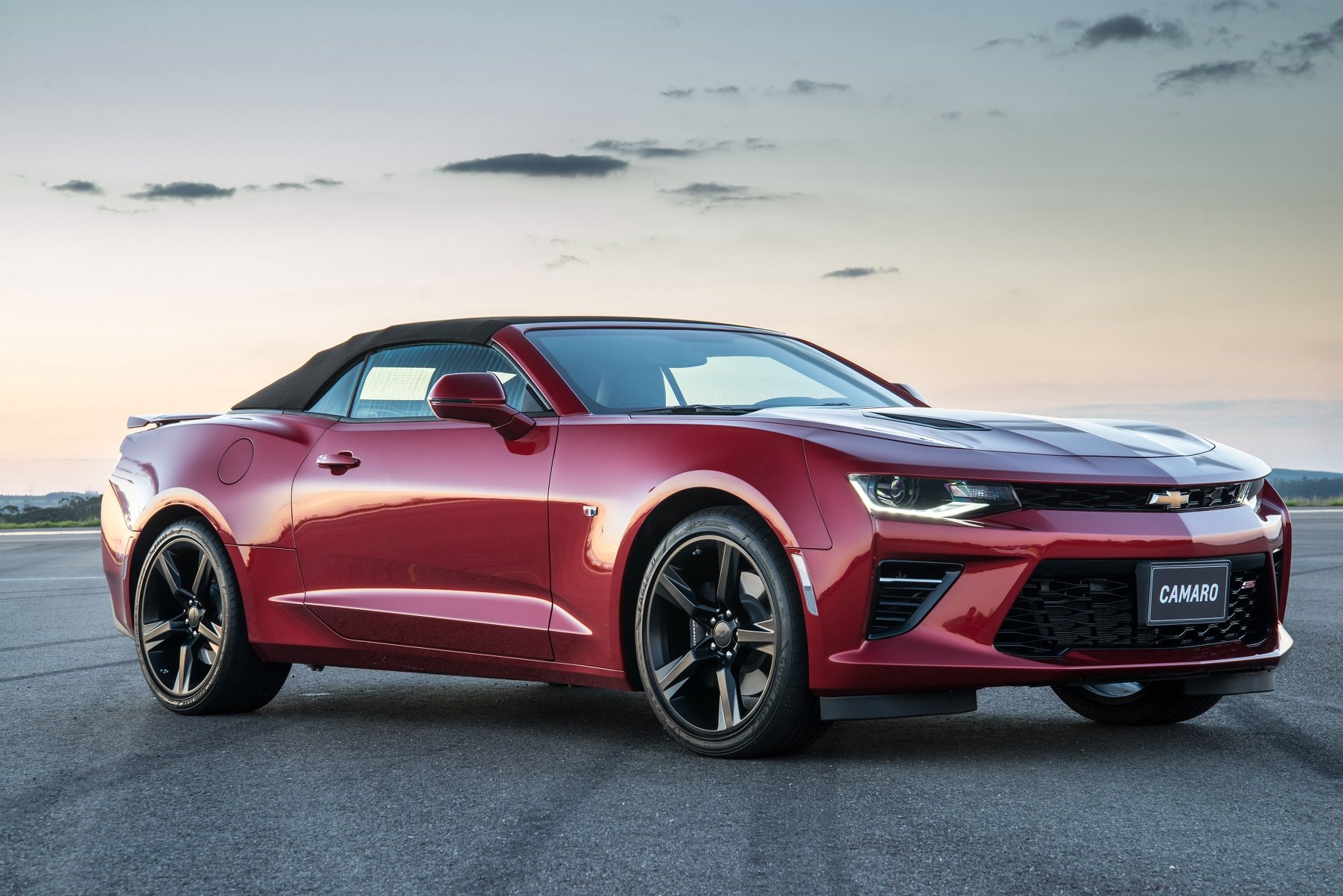
6. **Chevrolet Corvair: A Classic with a Dangerous Design**The Chevrolet Corvair holds a distinctive yet controversial place in American automotive history, primarily due to its unconventional design and the significant safety concerns it raised. Breaking away from the prevalent front-engine, rear-wheel-drive layout of the 1960s, the Corvair featured a rear-mounted, air-cooled engine, a configuration more commonly associated with European sports cars like the Porsche 911. However, unlike its German counterpart, the Corvair was notoriously difficult to control, leading to a reputation for unpredictable and dangerous handling.
One of the most vocal critics of the Corvair was Ralph Nader, a pioneering automotive safety advocate, whose scathing critique encapsulated the car’s fundamental flaw. He famously described it as a vehicle where one could have a “one-car accident.” This statement vividly highlighted the Corvair’s propensity for drivers to lose control even without the involvement of another vehicle, severely damaging its public image and sparking a national debate about automotive safety standards.
The principal engineering flaw resided in the Corvair’s rear suspension system. It utilized half-shafts that connected the rear wheels to the differential. The critical problem was that these half-shafts were prone to excessive flexing when the suspension was under stress. This flexing caused the rear wheels to tilt at extreme and unpredictable angles, significantly reducing their grip on the road and making it exceedingly easy for drivers to lose control, especially during spirited driving or emergency maneuvers.
In the most perilous scenarios, the rear wheel could tuck completely underneath the car’s body, leading to an immediate rollover. This was an exceptionally dangerous defect, particularly at higher speeds or during sharp turns, and contributed to numerous accidents. The Corvair’s unpredictable handling and heightened risk of rollovers cemented its status as one of the most controversial vehicles of its era, serving as a cautionary tale of design choices prioritizing novelty over fundamental safety and stability.
Car Model Information: 1964 Chevrolet Corvair Monza
Caption: 1964 Chevrolet Corvair Monza
Name: Chevrolet Corvair
Manufacturer: Chevrolet
Production: 1960–1969
Platform: GM Z platform
Chassis: Unibody
ModelYears: 1960–1969
Assembly: United States,Kansas City, Missouri,Oakland, California,Van Nuys,St. Louis,Flint, Michigan,Belgium,Canada,Mexico,South Africa,Switzerland,Venezuela
Class: Compact car
Successor: Chevrolet Vega
Layout: Rear-engine, rear-wheel-drive layout
Categories: All Wikipedia articles written in American English, All articles lacking in-text citations, All articles needing additional references, All articles with dead external links, All articles with specifically marked weasel-worded phrases
Summary: The Chevrolet Corvair is a rear-engined, air-cooled compact car manufactured and marketed by Chevrolet over two generations between 1960 and 1969. The Corvair was a response to the increasing popularity of small, fuel-efficient automobiles, particularly the imported Volkswagen Beetle and American-built compacts like the Rambler American and Studebaker Lark.
The first generation (1960–1964) was offered as a four-door sedan, two-door coupe, convertible, and four-door station wagon. A two- and four-door hardtop and a convertible were available second-generation (1965–1969) variants. The Corvair platform was also offered as a subseries known as the Corvair 95 (1961–1965), which consisted of a passenger van, commercial van, and pickup truck variant. Total production was approximately 1.8 million vehicles from 1960 until 1969.
The name “Corvair” was first applied in 1954 to a Corvette-based concept with a hardtop fastback-styled roof, part of the Motorama traveling exhibition. When applied to the production models, the “air” part referenced the engine’s cooling system.
A prominent aspect of the Corvair’s legacy derives from controversy surrounding the handling of early models equipped with rear swing axles, articulated aggressively by Ralph Nader’s Unsafe at Any Speed but tempered by a 1972 Texas A&M University safety commission report for the National Highway Traffic Safety Administration (NHTSA) which found that the 1960–1963 Corvair possessed no greater potential for loss of control in extreme situations than contemporary compacts.
To better counter popular inexpensive subcompact competitors, notably the Beetle and Japanese imports such as the Datsun 510, GM replaced the Corvair with the more conventional Chevrolet Vega in 1970.
Get more information about: Chevrolet Corvair
Buying a high-performing used car >>>
Brand: Chevrolet Model: Corvair
Price: $29,988 Mileage: 74,787 mi.
Read more about: Navigating the Road: Unpacking 14 Vehicles Known for Sketchy Driver Reputations and Notorious Reliability Issues

7. **Toyota’s Sticky Gas Pedal: Unintended Acceleration and Corporate Response**Imagine the terrifying scenario of driving when, without warning, your vehicle’s gas pedal becomes stuck, causing the car to accelerate uncontrollably. This nightmarish reality afflicted many Toyota drivers in 2009 and 2010, leading to two monumental recalls and forcing the automaker to temporarily halt sales of several popular models. The crisis underscored critical issues in both mechanical design and corporate responsiveness, shaking public trust in a brand synonymous with reliability.
The initial recall, issued on November 2, 2009, pinpointed incorrectly installed floor mats as the culprit. These mats could slip out of position and trap the accelerator pedal in a depressed state, making it exceedingly difficult for drivers to slow down or stop their vehicles. With the pedal held down, affected cars would continue to accelerate, putting occupants at serious risk of high-speed collisions and severe injuries.
However, the problem proved to be more deeply rooted than just floor mats. In January 2010, Toyota issued a second, even more alarming recall after discovering a mechanical defect within the accelerator pedal itself. This internal flaw could cause the pedal to stick independently, even in the absence of floor mat interference. Drivers were once again confronted with the perilous situation of uncontrollable vehicle acceleration, often occurring unexpectedly.
Given the life-threatening nature of the issue, Toyota took the drastic step of immediately halting sales of the affected vehicles, a move that caused significant financial losses and production delays. The company embarked on a massive effort to engineer and manufacture new parts to rectify the defect, impacting millions of Toyota owners globally. While Toyota ultimately resolved the technical issues, the incident severely damaged the company’s long-standing reputation for quality and highlighted the critical importance of rigorous safety testing and swift, decisive action in the face of major safety defects. It served as a stark reminder for the entire automotive industry about prioritizing driver safety above all else.

8. **Ford Pinto’s Deadly Fuel Tank Flaw**Getting rear-ended is never a pleasant experience, but for owners of the Ford Pinto in the late 1970s, it could be lethally dangerous. A critical flaw in the car’s design made it uniquely hazardous in rear-end collisions, elevating a minor impact into a potential fireball. The problem stemmed from the fuel filler neck, a component that could break off upon impact, causing fuel to leak and ignite.
The Pinto’s fuel tank was positioned in a highly vulnerable manner. During a rear-end crash, the fractured fuel filler neck could puncture the tank, leading to gasoline spraying directly into the passenger cabin. This design oversight created an immediate and severe fire hazard, capable of engulfing the entire vehicle in flames within seconds and trapping occupants in extreme peril.
Shockingly, Ford was aware of this grave defect early on, calculating that a simple fix would cost approximately $11 per car. However, a leaked 1973 internal memo controversially revealed that the company decided against this safety modification. The memo even estimated potential fatalities, concluding it would be financially cheaper to handle lawsuits than to implement a widespread recall and repair.
This decision proved to be a monumental error. Following 27 documented deaths linked to the flaw, intense public outrage compelled Ford to act. The company was forced to recall 1.5 million Pintos, incurring costs around $20 million – far exceeding the original preventative fix. The Ford Pinto case became a notorious example of corporate negligence, highlighting the profound dangers of prioritizing profit over fundamental consumer safety.
Car Model Information: 1978 Ford Pinto RUNABOUT HATCHBACK
Name: Ford Pinto
Caption: Ford Pinto
Manufacturer: Ford Motor Company
Aka: Mercury Bobcat
Production: September 1970 – July 1980
ModelYears: 1971–1980 (Pinto),1974–1980 (Bobcat)
Assembly: Edison, New Jersey,Milpitas, California
Designer: Robert Eidschun (1968)
Class: Subcompact car
BodyStyle: Sedan (automobile),sedan delivery,station wagon,hatchback
Related: #Mercury Bobcat (1974–1980),Ford Mustang (second generation)
Layout: Front-engine, rear-wheel-drive layout
Chassis: Unibody
Engine: unbulleted list
Abbr: on
Disp: Ford Cologne engine
Transmission: unbulleted list
Wheelbase: 94.0 in
Length: 163 in
Width: 69.4 in
Height: 50 in
Weight: convert
Predecessor: Ford Cortina#Mark II (1966–1970)
Successor: Ford Escort (North America)
Categories: 1980s cars, Articles with short description, Cars discontinued in 1980, Cars introduced in 1970, Commons category link from Wikidata
Summary: The Ford Pinto is a subcompact car that was manufactured and marketed by Ford Motor Company in North America from 1970 until 1980. The Pinto was the first subcompact vehicle produced by Ford in North America.
The Pinto was marketed in three body styles throughout its production: a two-door fastback sedan with a trunk, a three-door hatchback, and a two-door station wagon. Mercury offered rebadged versions of the Pinto as the Mercury Bobcat from 1975 until 1980 (1974–1980 in Canada). Over three million Pintos were produced over its ten-year production run, outproducing the combined totals of its domestic rivals, the Chevrolet Vega and the AMC Gremlin. The Pinto and Mercury Bobcat were produced at Edison Assembly in Edison, New Jersey, St. Thomas Assembly in Southwold, Ontario, and San Jose Assembly in Milpitas, California.
Since the 1970s, the safety reputation of the Pinto has generated controversy. Its fuel-tank design attracted both media and government scrutiny after several deadly fires occurred when the tanks ruptured in rear-end collisions. A subsequent analysis of the overall safety of the Pinto suggested it was comparable to other 1970s subcompact cars. The safety issues surrounding the Pinto and the subsequent response by Ford have been cited widely as business ethics and tort reform case studies.
Get more information about: Ford Pinto
Buying a high-performing used car >>>
Brand: Ford Model: Pinto
Price: $18,995 Mileage: 88,217 mi.
Read more about: The Automotive Hall of Shame: 15 Infamous Rides and Their Reputations for Bad Drivers and Dangerous Flaws

9. **BMW X7’s Leaky Cupholder Problem**Even luxury brands like BMW, celebrated for precision engineering, can face surprising and critical design flaws. In late 2023, the BMW X7 SUV became the subject of a class-action lawsuit over an utterly unexpected issue: its cupholders. This seemingly innocuous feature revealed how even minor design decisions can compromise safety in complex modern vehicles.
The lawsuit alleged a severe design flaw where spilled liquids from the cupholders could leak onto critical airbag electronics. This vulnerability posed a significant safety risk, as liquid intrusion had the potential to either disable the airbags entirely or, more alarmingly, cause them to deploy unexpectedly. Either scenario drastically increases the risk of accidents and serious injuries, directly undermining a primary safety system.
While the lawsuit is ongoing, this peculiar problem has undoubtedly tarnished BMW’s reputation for quality. It followed recent criticism for attempts to charge subscription fees for heated seats, further alienating customers. This cupholder issue adds to BMW’s controversies, prompting consumers to question the brand’s commitment to quality and paramount safety. Until a permanent solution is found, owners of affected X7s are advised to be exceptionally cautious when using their cupholders.
Car Model Information: 2024 BMW X7 xDrive40i
Name: BMW X7
Manufacturer: BMW
ModelCode: G07
Production: December 2018 – present
ModelYears: 2019–present
Assembly: ubl
Class: Full-size,luxury car,crossover SUV
BodyStyle: SUV
Layout: Front-engine, four-wheel-drive layout
Platform: BMW CLAR platform
Related: unbulleted list
Engine: unbulleted list
Transmission: ZF 8HP transmission,automatic transmission#Hydraulic automatic transmissions
Wheelbase: 3105 mm
Abbr: on
Length: convert
Width: 2000 mm
Height: convert
Weight: convert
Designer: Julien Sarreméjean,Anders Thøgersen (facelift)
Drivetrain: MHEV
Categories: 2020s cars, All-wheel-drive vehicles, All articles with dead external links, Articles with dead external links from July 2025, Articles with permanently dead external links
Summary: The BMW X7 is a full-size luxury crossover sport utility vehicle manufactured by BMW. It is BMW’s largest and second most expensive SUV in its line-up, and is considered a flagship SUV for the brand.
The X7 was first announced by BMW in March 2014. It was officially unveiled on October 17, 2018, with pre-orders being taken online. The X7 has been available at dealers since March 2019.
Get more information about: BMW X7
Buying a high-performing used car >>>
Brand: BMW Model: X7
Price: $63,991 Mileage: 20,728 mi.

10. **Volkswagen’s Dieselgate Scandal**Volkswagen, long a symbol of meticulous German engineering, was thrust into one of the automotive industry’s most significant scandals: Dieselgate. This was not an accidental defect, but a deliberate act of deception where the company systematically cheated on emissions tests, betraying the trust of regulators and consumers globally. The scandal fundamentally challenged perceptions of corporate ethics.
At the core of this elaborate fraud was a hidden software trick known as a “defeat device.” This program detected when a diesel vehicle was undergoing an emissions test, temporarily adjusting engine performance to deceptively meet legal standards. Once the test concluded, the car reverted to normal operation, releasing nitrogen oxides and other pollutants at levels far exceeding legal limits, creating a significant environmental hazard.
The full scale of the deception was exposed in 2015, triggering a massive recall of millions of Volkswagen and Audi diesel cars. While many vehicles could be fixed with a software update, approximately one million required extensive mechanical repairs to meet actual emissions standards. By the time official recall efforts began in 2016, Volkswagen’s once-unblemished reputation had already suffered severe, possibly irreparable, damage.
The consequences for Volkswagen were immense. The company admitted wrongdoing, pleaded guilty to criminal charges, and faced staggering penalties, paying $40 billion in fines, settlements, and vehicle buybacks. Furthermore, former Volkswagen engineer Oliver Schmidt received a seven-year prison sentence for his role in the deception. Dieselgate stands as a stark warning of the severe repercussions awaiting companies that prioritize financial gain over integrity and public health.
Read more about: The Dark Side of Diesel: 15 Models Plagued by Emissions Scandals and Lawsuits
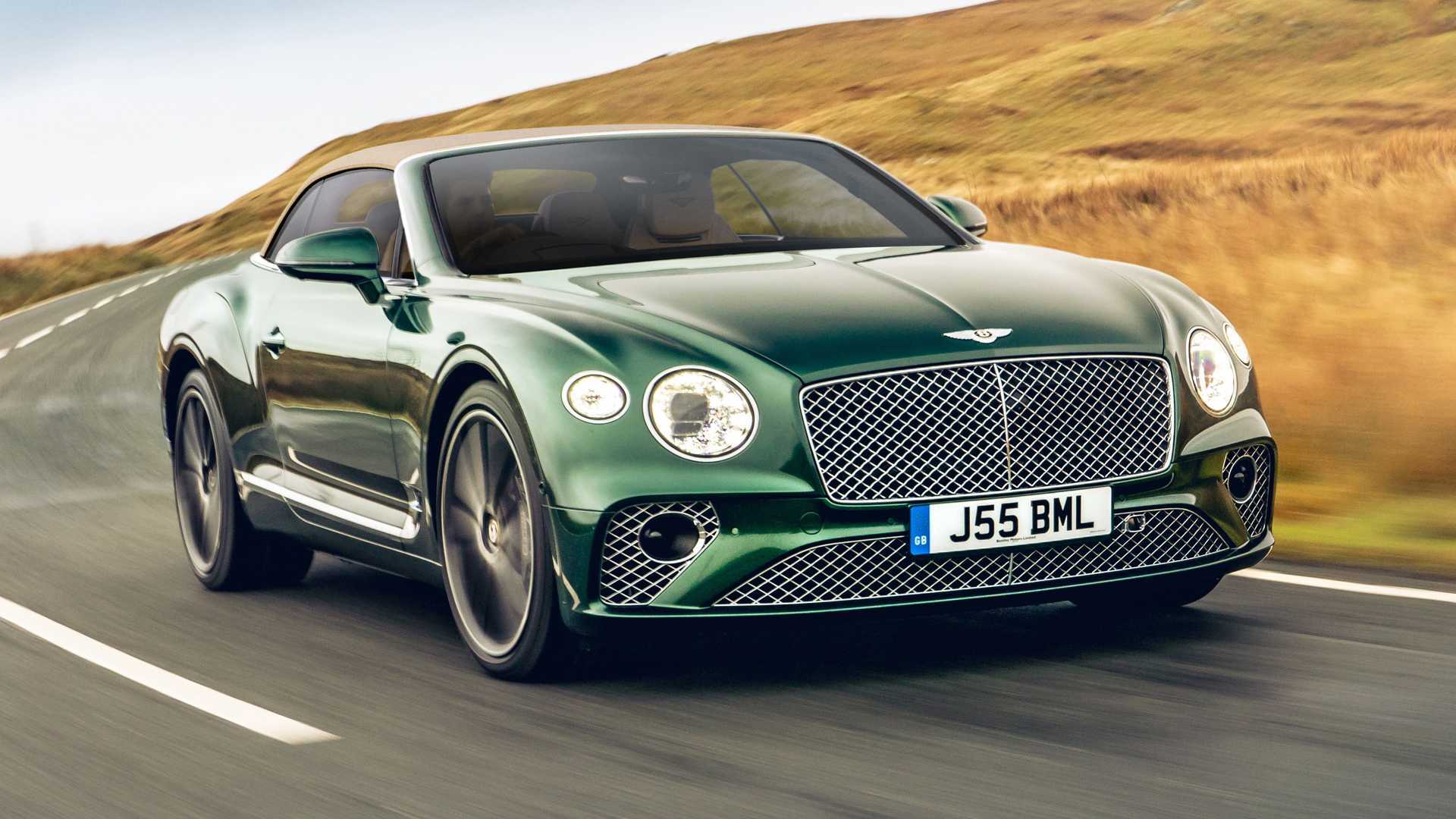
11. **Bentley Arnage’s Dangerous Wheel Nut Flaw**In the exclusive realm of ultra-luxury automobiles, where perfection is often assumed, even prestigious brands like Bentley can encounter fundamental engineering flaws. In 2007, Bentley faced a recall involving its exquisite Arnage R model, demonstrating that automotive excellence isn’t impervious to critical defects that compromise safety.
The problem centered on a seemingly minor but crucial component: the wheel nuts. Bentley discovered that some Arnage R vehicles had left the factory fitted with incorrectly sized wheel nuts. This oversight, though small, carried profoundly serious implications. Improperly sized nuts could lead to the gradual loosening of the wheels, or, in extreme cases, cause them to detach entirely from the vehicle while in motion.
The consequences of a wheel detaching at speed are terrifying, causing an immediate loss of vehicle control and a high likelihood of a severe accident. Recognizing this life-threatening defect, Bentley swiftly issued a recall. This decisive action ensured that all affected vehicles were inspected and repaired with the correct, securely fitting wheel nuts, thereby mitigating the grave risk to their discerning owners.
This incident served as a powerful reminder that manufacturing errors can occur across the entire automotive industry, regardless of a vehicle’s luxury status or price. It underscored the universal truth that no vehicle, however meticulously engineered or expensive, is entirely flawless. Bentley’s prompt response, while costly and potentially damaging, reinforced the critical importance of vigilant quality control and timely recalls to uphold driver and passenger safety.
Car Model Information: 2006 Bentley Arnage R
Name: Bentley Arnage
Manufacturer: Bentley Motors
Designer: Steve Harper (designer)
Production: 1998–2009
Assembly: Crewe, Cheshire,England
Predecessor: Bentley Brooklands,Bentley Turbo RT
Successor: Bentley Mulsanne (2010)
Class: Full-size,luxury car
BodyStyle: sedan (automobile)
Layout: Front-engine, rear-wheel-drive layout
Engine: ubl
Transmission: GM 4L80-E transmission,ZF 5HP30 transmission,ZF 6HP26 transmission
Wheelbase: {{convert,3116,mm,in,1,abbr=on
Length: {{convert,5394,mm,in,1,abbr=on
Width: {{convert,1932,mm,in,1,abbr=on
Abbr: on
Height: {{convert,1516,mm,in,1,abbr=on
Weight: Green Label: {{convert,5120,lb,abbr=on,order=flip
Order: flip
Related: Rolls-Royce Silver Seraph,Bentley Azure#Second generation (2006–2009),Bentley Brooklands Coupé,Bentley State Limousine
Sp: uk
Caption: Bentley Arnage R (facelift)
ModelYears: 1999–2009
Categories: 2000s cars, All Wikipedia articles written in British English, Articles with short description, Bentley vehicles, CS1 maint: archived copy as title
Summary: The Bentley Arnage is a full-size luxury car manufactured by Bentley Motors in Crewe, England, from 1998 to 2009. The Arnage and its Rolls-Royce-branded sibling, the Silver Seraph, were introduced in the spring of 1998. They were the first entirely new designs for the two marques since 1980.
In September 2008, Bentley announced that production of the model would end during 2009. A replacement model, the Bentley Mulsanne was launched in August 2009 at the Pebble Beach Concours d’Elegance.
Get more information about: Bentley Arnage
Buying a high-performing used car >>>
Brand: Bentley Model: Arnage
Price: Not Priced Mileage: 25,276 mi.

12. **Audi’s Unintended Acceleration Scandal**Long before Toyota faced its “sticky gas pedal” crisis, Audi confronted a similarly harrowing and widespread issue with unintended acceleration in the 1980s. The Audi 5000 model became infamous for inexplicably speeding up when drivers shifted out of park, creating an incredibly dangerous and unpredictable situation for occupants and leaving a lasting scar on the brand’s reputation.
The Audi 5000 gained unwanted notoriety as the first car widely recognized for this severe safety defect. Audi was compelled to issue three separate recalls between 1982 and 1987 in an attempt to diagnose and rectify the elusive problem. Despite these extensive efforts, the company struggled to definitively resolve the underlying issue, battling persistent public mistrust and continued incident reports.
Ultimately, Audi’s inability to conclusively fix the unintended acceleration problem led to a drastic decision: the company ceased sales of the Audi 5000 in the United States in 1988. Approximately 389,102 vehicles were implicated in the issue, reflecting the widespread nature of the concern and its profound impact on consumer confidence.
This scandal holds a significant place in automotive safety history, illustrating the immense difficulties manufacturers can face with deeply embedded defects. Audi’s turbulent experience underscored the absolute criticality of rigorous testing, unwavering quality control, and the ability to rapidly and effectively address safety concerns throughout a car model’s entire lifecycle. It remains a stark historical precedent for why safety must always be paramount.
Car Model Information: 2018 Audi Q7 3.0T Prestige
Name: Audi 100 / Audi 200 / Audi 5000
Aka: Audi 5000 (North America)
Manufacturer: Auto Union
Production: 1968–1994
Class: Luxury vehicle#Mid-size luxury.2Fexecutive cars
Layout: front-wheel drive
Platform: Volkswagen Group C platform
Successor: Audi A6
Categories: 1970s cars, 1980s cars, 1990s cars, 2000s cars, All-wheel-drive vehicles
Summary: The Audi 100 and Audi 200 (and sometimes called Audi 5000 in North America) are primarily mid-size/executive cars manufactured and marketed by the Audi division of the Volkswagen Group. The car was made from 1968 to 1997 across four generations (C1–C4), with a two-door model available in the first and second generation (C1-C2), and a five-door model available in the last three generations (C2–C4).They also made an 100 Avant in the 1970s.
In 1982, the third generation Audi 100 achieved a remarkably low (for its time) drag coefficient of 0.30, featuring flush greenhouse sides with unique sliding window mountings.
The C2 and C3 models of the Audi 100 were marketed in North America as the Audi 5000 from 1978 to 1988, and in South Africa as the Audi 500.
In 1993, the models were mildly restyled, and renamed the Audi A6 series in conjunction with a general new Audi naming scheme, until they were replaced by a new generation of A6, internally code-named C5, in 1997. The Audi 100’s traditional competitors include the Mercedes Benz E-Class and BMW 5-Series.
Get more information about: Audi 100
Buying a high-performing used car >>>
Brand: Audi Model: 5000
Price: $23,950 Mileage: 98,826 mi.
Read more about: Profits Over Safety: The Biggest Scandals in Automotive History
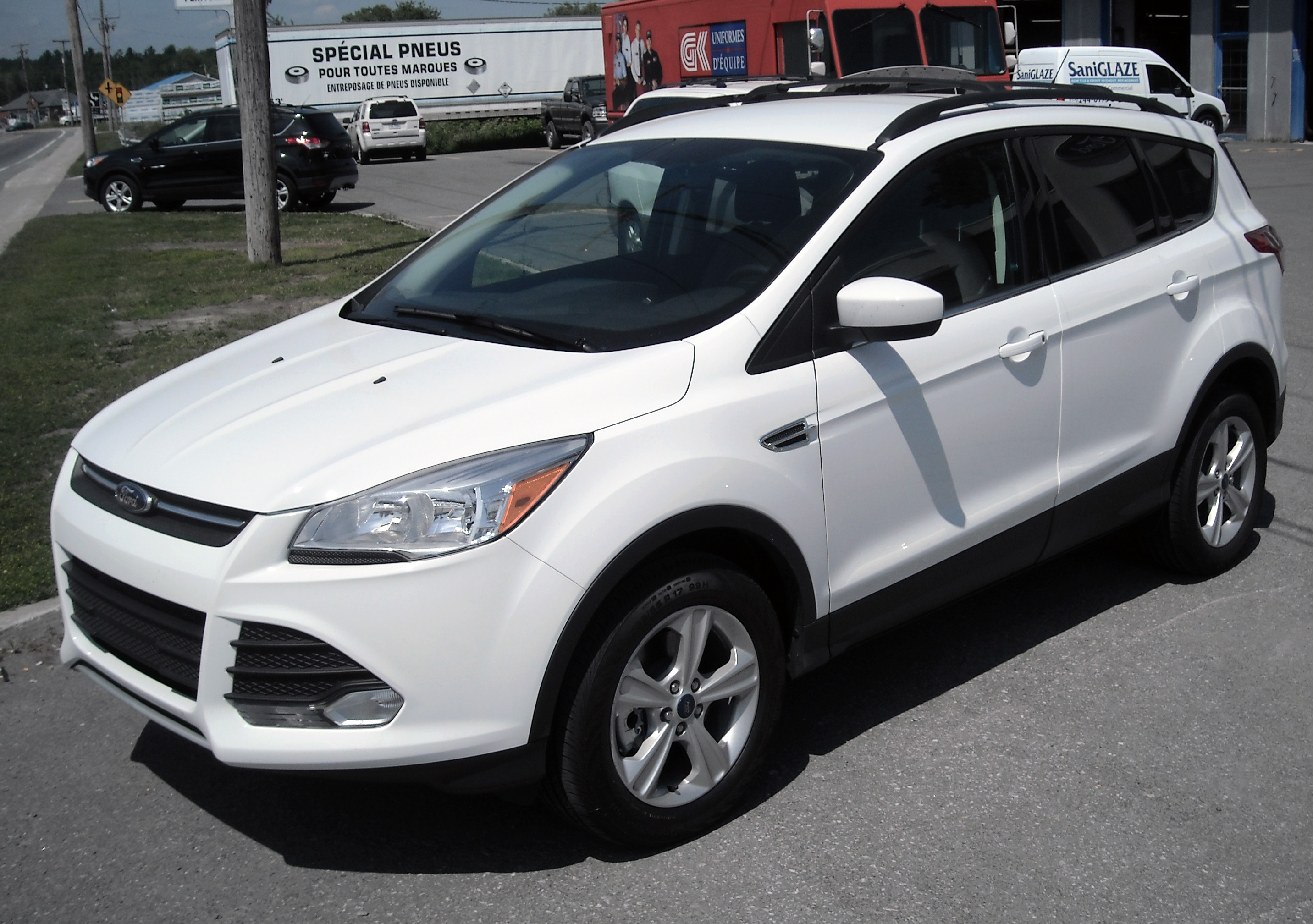
13. **Ford Escape Recall A Close Call with Engine Fires**In 2013, Ford once again confronted a serious safety threat, necessitating a significant recall involving its popular Ford Escape SUVs. The identified issue was a critical flaw within the fuel lines, which were prone to cracking and subsequently leaking gasoline. This defect posed an immediate and severe danger, as the leaking fuel could spill onto the vehicle’s engine, which operates at extremely high temperatures.
The mechanism of this defect was frighteningly straightforward yet potentially catastrophic: a crack in a fuel line allowed pressurized gasoline to escape its containment. This escaping fuel, under the hood and in close proximity to searing hot engine components, created an ideal scenario for spontaneous combustion. An engine fire, especially while a vehicle is in operation, can rapidly escalate, endangering occupants and other road users, often leading to the total loss of the vehicle.
Fortunately, by this point, Ford had significantly refined its recall system, having learned from decades of experience. The company demonstrated commendable responsiveness, acting swiftly to address the problem before widespread serious harm occurred. This proactive approach was crucial, limiting the scope of immediate danger; only about 11,500 Ford Escapes were affected, and critically, no injuries or fatalities were reported as a direct consequence.
This recall exemplifies advancements in modern automotive safety protocols and how manufacturers have learned from past mistakes. Unlike earlier eras, similar critical issues are now met with swift and decisive action. Ford’s effective management of the 2013 Escape recall prevented fires or injuries, resolving the issue before it could escalate into a larger crisis, highlighting the ongoing necessity for vigilance even in modern vehicles.
Car Model Information: 2025 Ford Escape Active
Name: Ford Escape
Caption: 2021 Escape Hybrid (US)
Manufacturer: Ford Motor Company
Aka: Unbulleted list
Production: 2000–present
ModelYears: 2001–present
Class: Compact crossover SUV
BodyStyle: SUV
Layout: Unbulleted list
Predecessor: Nissan Terrano II
Successor: Ford Territory (China)
Categories: 2010s cars, 2020s cars, All-wheel-drive vehicles, All Wikipedia articles written in American English, All articles with dead external links
Summary: The Ford Escape is a compact crossover SUV manufactured and marketed by the Ford Motor Company since the 2001 model year. The first Ford SUV derived from a car platform, the Escape fell below the Ford Explorer in size; the Escape was sized between the Ford EcoSport and Ford Edge. The 2005 model year Ford Escape Hybrid was the first hybrid-electric vehicle from Ford, and the first hybrid produced as an SUV.
The first two generations of the Escape used the Ford CD2 platform (jointly developed with Mazda), leading to the release of the rebadged variants, the Mazda Tribute and Mercury Mariner; as with the Escape, both the Tribute and Mariner were marketed in North America (the Mariner was never marketed in Canada). In Europe, the Escape was initially branded as the Ford Maverick from 2001 to 2008 (replacing a Nissan-produced SUV).
Under the mid-2000s “One Ford” globalization strategy, the third and fourth-generation designs of the Escape have been unified with the Ford Kuga, designed by Ford of Europe. Sharing a common body and chassis underpinnings (and several engines), the Escape and Kuga are manufactured in their home markets. As with previous generations, the fourth-generation Escape is offered with gasoline, hybrid, and plug-in hybrid options. Outside of North America, the Ford Escape is marketed in Australia, China, and Taiwan.
In August 2025, it was announced that Ford will be discontinuing the Escape after the 2026 model year.
Get more information about: Ford Escape
Buying a high-performing used car >>>
Brand: Ford Model: Escape
Price: $23,494 Mileage: 3,958 mi.
Read more about: Consumer Alert: 12 SUVs Prone to Expensive Mechanical Issues Early in Their Lifespan
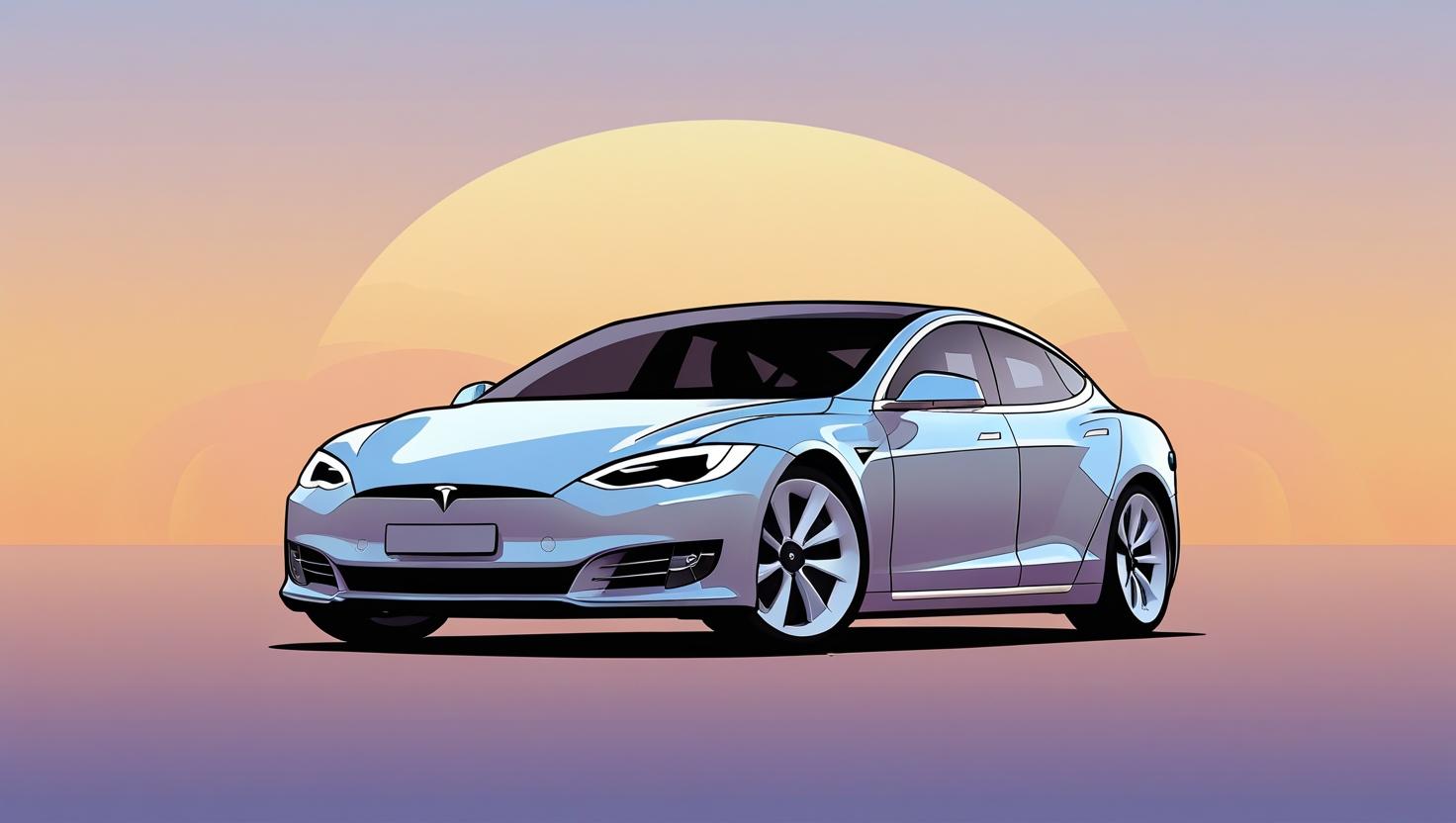
14. **Tesla’s Systemic Safety Issues and Self-Driving Concerns**Tesla’s trajectory in safety engineering presents a deeply troubling deviation from the industry’s positive trend. While other manufacturers have evolved vehicles into sophisticated, life-saving platforms, Tesla’s path signals a dangerous regression. This is evident in a disturbing pattern of predictable engineering failures from 2018 to 2024, resulting in fatality rates significantly exceeding industry norms and undermining the brand’s utopian promises.
Early incidents from 2018 to 2020 served as ignored warning signs, revealing recurring design flaws. Crashes were attributed to Autopilot failures, inability to detect hazards, and post-impact electronic malfunctions. Tragic deaths in 2016 due to driverless algorithms were harbingers of deeper issues. Despite these warnings, Tesla aggressively expanded, using what critics call disinformation campaigns to divert attention from these dangerous realities.
By 2021 and 2022, the cracks became undeniable. A surge in motorcycle-related fatalities highlighted Tesla’s persistent inability to reliably detect smaller vehicles and pedestrians. Events of sudden unintended acceleration (SUA) and unpredictable “veering” became distressingly common, compounded by crashes followed by immediate fires and inoperable electronic door systems. Tesla’s safety ratings, once lauded, were increasingly perceived as intentional distractions from a troubling reality.
The year 2023 marked a critical turning point as Full Self-Driving (FSD) introduced fresh risks. Veering incidents tripled, and the first confirmed FSD-related fatality occurred in July. Multiple-fatality events became disturbingly routine. A harrowing fire in a Model Y trapped occupants, reinforcing fears about Tesla’s over-reliance on poorly designed, fragile electronics for life-critical systems, leading to explicit warnings about door failures during fires.
The final quarter of 2024 saw a catastrophic escalation. October and November alone witnessed over 22 fatalities, including three separate incidents claiming four or more lives each. Immediate-ignition fires and persistently inoperable electronic door systems became tragically common symptoms of a deeper, systemic crisis. While Tesla’s fleet size roughly tripled from 2020 to 2024, serious incidents increased five-fold, strongly suggesting systemic safety issues beyond mere scaling effects, highlighting profound failures in oversight and corporate responsibility.
Read more about: From Dream Machine to Daily Nightmare: 10 Vehicles That Tested Their Owners’ Patience
In dissecting these pivotal moments in automotive history, from the infamous Ford Pinto to the cutting-edge yet critically flawed systems of modern Teslas, a clear and recurring narrative emerges. These cases are not merely isolated incidents of technical malfunction; they are profound lessons in engineering integrity, corporate accountability, and the delicate balance between innovation and safety. Each recall, each scandal, and each tragic incident underscores the immutable truth that while automotive technology strives for perfection, human factors—whether in design, production, or corporate decision-making—can introduce vulnerabilities with devastating consequences. The journey towards truly safe and reliable vehicles remains an ongoing endeavor, demanding constant vigilance, unwavering ethical commitment, and a relentless pursuit of engineering excellence from every corner of the industry. The lives of drivers and passengers, ultimately, depend on it.


